How to Install and Configure PyCharm on Windows
What is PyCharm?
PyCharm is a widely used IDE or integrated development environment for Python, which can run on Windows, Linux, or macOS. This cross-platform, application, combined with its being open-source, has caused PyCharm to be one of the fastest-growing IDEs since its development in 2010. PyCharm comes in two flavors: community edition or professional.
What is an IDE?
IDE stands for an Integrated Development Environment An IDE is a single solution for used in developing in your preferred coding language. It includes everything that is needed to build, develop and debug your code from start to finish. This application allows programmers to do most, if not all, of their development within a single application to expedite the development process and avoid issues using multiple software titles may cause.
What is Python?
Python is a cross-platform open-source programming language used by various applications and websites due to its popularity and excellent performance. Since Python is both cross-platform and open-source, we can develop our code without any additional cost or duplicate work if targeting multiple OS's. A few examples of applications that use Python would be Pinterest and Instagram.
Why Should I Use an IDE Like PyCharm?
Developers can code without using an IDE like PyCharm. All that is truly needed is an application like notepad++, Geany or TextPad. The downside of using a non-IDE based application is, the extra effort required to remember multiple functionalities of each language, the decrease in effectiveness, and the lack of debugging capabilities can become an issue.
Here are just a few of the benefits you get from an IDE like PyCharm:
- Better overall project management tools
- Increased standards enforcement that may be company or project specific
- Improved resource organization, and addition of shortcuts that reduce effort and time spent on code
- Auto-code generation
- Code autocompletion capabilities
- Refraction functionality
- Compile and Build along with organic unit testing
- Integrated debugging tools
- Improved source control
Prerequisites
- 64-bit versions of Microsoft Windows 8 or 10
- Minimum of 2 GB RAM, with 8 GB RAM recommended
- A minimum of 2.5 GB SSD hard drive space (SSD is recommended)
- A minimal screen resolution of 1024x768
- A version of Python 2.7+, or Python 3.5+
How Do I Install PyCharm?
Step 1.
Download PyCharm from the JetBrains website. You will have the option of using the Professional version or the Community version. This guide installs the Community edition. Note: It is also a good idea to confirm that Python is installed.
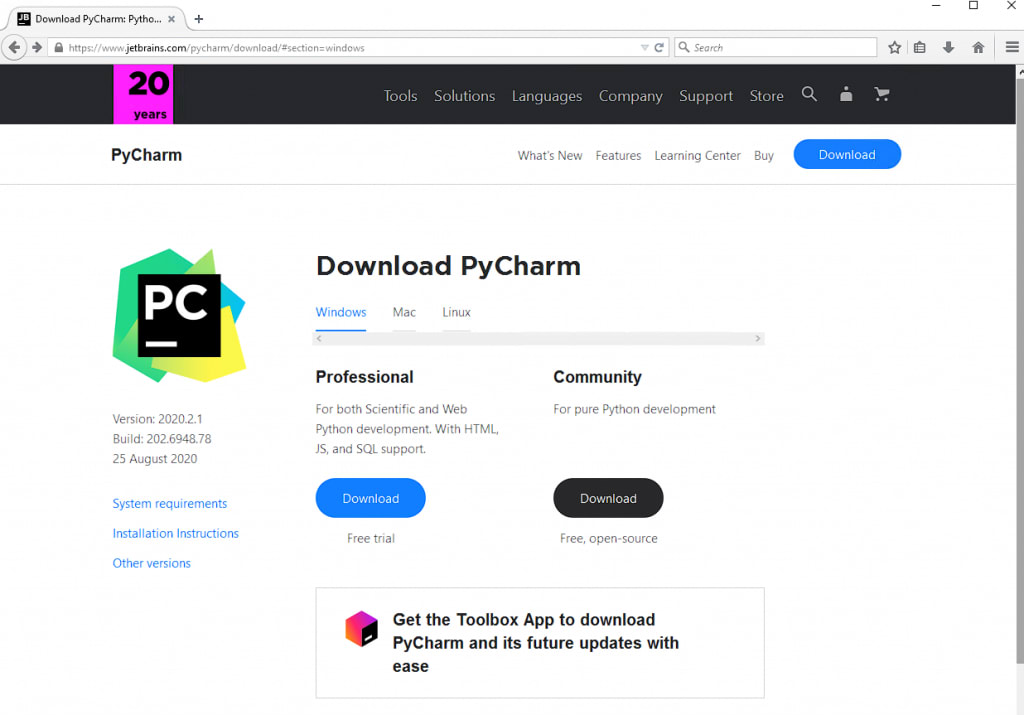
Step 2.
After running the installer, select the installation location. The most common location is in our Program Files directory, but this can be changed to an alternative location if needed, but this is usually unnecessary.
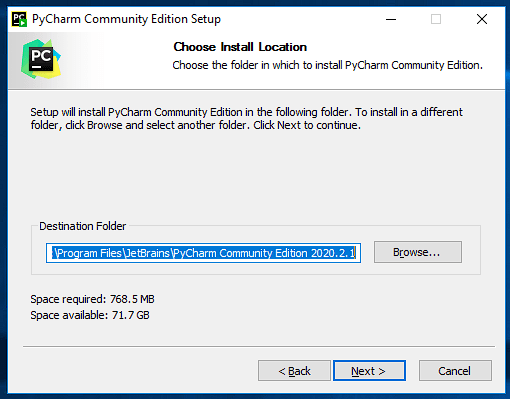
Step 3.
Next, we will be prompted to select our installation options. These include the option to add a desktop shortcut, updating your path to include PyCharm launcher along with any associating file types, and a context menu. You can see below the choices I have selected for my installation. Feel free to choose what is best for your development style.
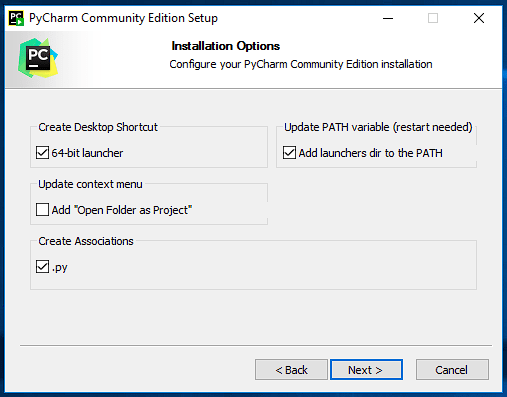
Step 4.
The next step is to choose your start menu folder location, for a quick reference from your desktop start page.
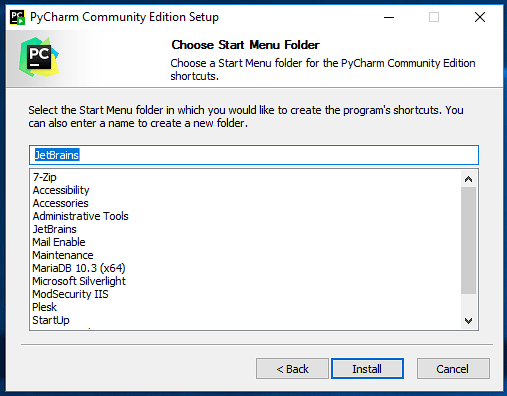
Step 5.
Now, we wait for PyCharm to install. If you wish to see additional details of the installation, you can select show details.
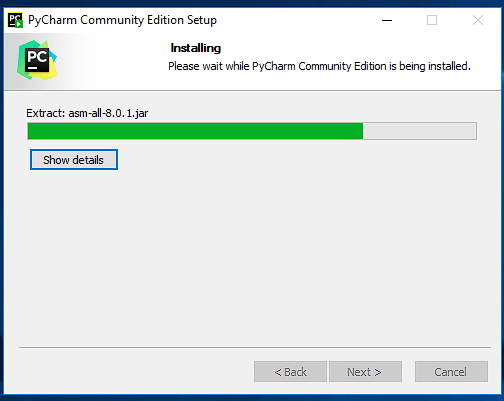
Step 6.
Finally, reboot the computer at the end of the PyCharm installation process.
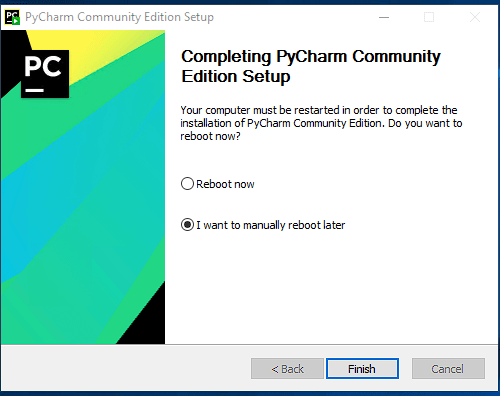
How Do I Configure PyCharm?
Step 1.
When we open PyCharm the first time, we will initially be prompted with featured plugins we can download to emulate a Vim editor, R language support, or an AWS Toolkit. A more detailed plugin list is available in settings. Feel free to install and enable the ones that best suit your needs. The image below and most likely, your screen will only show the featured plugins, but you can find more in your settings - External tools - packages.
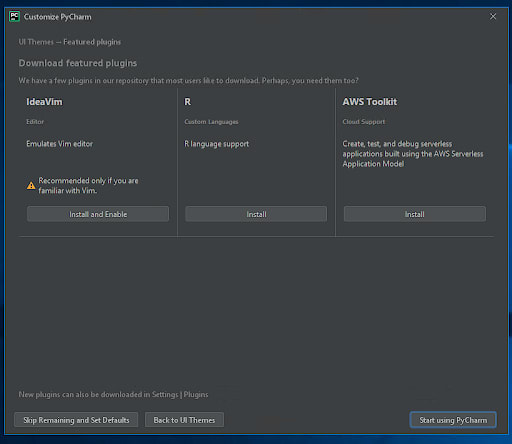
Step 2.
From the main screen, we can create a new project, open an existing one, or select one from our versioning control system of choice, like GIT. We can also see the configuration options in the bottom right corner, and ask for help which can be useful in moving forward.
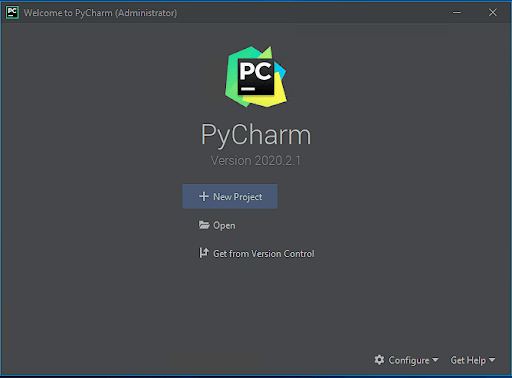
Step 3.
When creating a new project, we will be asked a few questions like where would we like to place our project folder and any related files which need to be saved. Or, whether we would like a main.py created by default, and other Python interpreter options unique to our environment.

Conclusion
PyCharm is an easy to install and configure Python IDE that provides the settings you would like available with free and paid versions depending on your use case and background in Python. IDE stands for an integrated development environment, a single solution for developing in your preferred code as it includes everything you need to get started.
Act Quickly!

We pride ourselves on being The Most Helpful Humans In Hosting™!
We are always available to answer any inquiries with issues related to this article, 24 hours a day, 7 days a week 365 days a year.
Give us a call at 800.580.4985, or open a chat or ticket with us to speak with one of our knowledgeable Solutions or Experienced Hosting advisors to learn how you can take advantage of this information today!
If you are a Fully Managed VPS server, Cloud Dedicated, VMWare Private Cloud, Private Parent server, Managed Cloud Servers, or a Dedicated server owner and you are uncomfortable with performing any of the steps outlined, we can be reached via phone @800.580.4985, a chat or support ticket to assisting you with this process.
Related Articles:

About the Author: Dominic Nixon
Dominic is a Solution Architect for Liquid Web. As a Solutions Architect, he uses his past experiences and expertise to help clients make core architectural changes to their hosting to achieve their long-term planning and business goals. He has a Bachelor's degree in Cyber Security, and in his free time, he loves being outdoors or chilling with his dog, Ella.
Our Sales and Support teams are available 24 hours by phone or e-mail to assist.
Latest Articles
In-place CentOS 7 upgrades
Read ArticleHow to use kill commands in Linux
Read ArticleChange cPanel password from WebHost Manager (WHM)
Read ArticleChange cPanel password from WebHost Manager (WHM)
Read ArticleChange the root password in WebHost Manager (WHM)
Read Article


